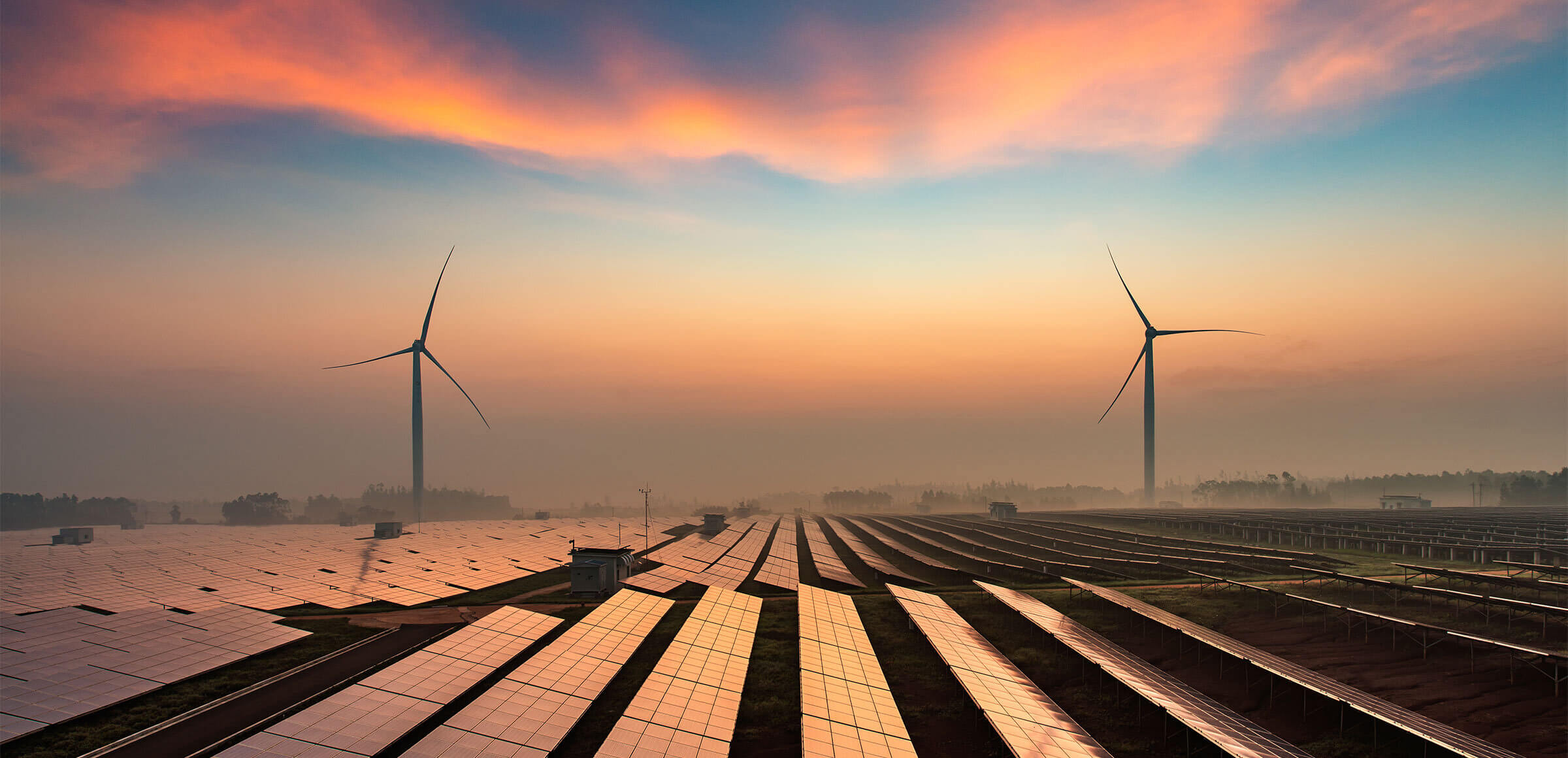The growing use of renewable energy sources is the cornerstone of the energy transition: thanks to continuous innovation, these are becoming increasingly efficient and competitive, while new technologies are on the horizon.
Not only do they generate electricity without emitting greenhouse gases, they are also virtually inexhaustible. Renewable energies are the cornerstone of the energy transition. To be precise, the energy used is never actually renewed but rather transformed into electricity. These are the energy sources like wind and sunlight that renew themselves independently of whatever use is made of them, as opposed to, for example, fossil fuels such as coal and oil.
Mature technologies: hydroelectric and geothermal energy
The oldest way of generating electricity from renewable sources is hydroelectric (the first power plants date back to the end of the 1800s) and it is also the largest, with a global installed capacity greater than that of all other renewable sources combined. This is a mature technology that does not lend itself to disruptive revolutions, but new technologies can boost the efficiency of the plants and prolong their lifespans. Moreover, in many nations, especially developing countries, there is still substantial potential for growth in capitalizing on the country’s water resources.
Geothermal energy is another established technology, dating back to the beginning of the 20th century. The world’s first plant, in Larderello in Tuscany, was opened in 2011 but the first experiments date back to 1904. Geothermal energy today plays a secondary role at the global level, partly because only certain areas of the world enjoy significant geothermal resources. Innovative technologies, such as low enthalpy geothermal plants, can, however, notably extend the potential number of countries suited to the development of geothermal energy.
The huge growth in solar and wind power
Solar photovoltaic power, like wind power, is the protagonist of the energy transition currently taking place. While until just a few years ago its role was considered marginal, today it is experiencing rocketing growth: global photovoltaic capacity increased from 40 GW in 2010 to 580 GW in 2019. Credit for this must go above all to the advances in technological innovation, in particular in the sector of materials science, which have made photovoltaic plants economically competitive with fossil fuels. According to the International Renewable Energy Agency (IRENA), the cost of producing electricity from photovoltaics has fallen by 82% in the last decade. And the outlook is even more promising: with the latest generation technology, it will be possible to increase efficiency of solar panels by 30% compared with today’s levels and productivity by more than 20%.
Technology has also made enormous strides forward in the sector of wind power: today wind turbines can span up to 200 meters in diameter and are predicted to increase even further. Increased productivity has brought costs down in this case as well: from 2010 to 2019 the cost of producing onshore wind power fell by 39% and offshore fell by 29%. The result has been spectacular growth: the overall capacity of onshore wind farms has grown from 178 GW in 2010 to 594 GW in 2019. Offshore plants have seen a slower expansion with just 28 GW installed in 2019, but the potential for growth is enormous.
Emerging technologies: marine energy, hydrogen and storage
Among the most promising sources of renewable energy for the future are our seas and oceans, with their immense potential: the most obvious way to produce electricity is to use the energy generated by the movement of the waves, but another way is to harness the power of the tides, with the benefit that these can be predicted accurately. Other methods include those based on the temperature differences between surface water and deep water or even based on the differences in salinity of different water masses. The technology to exploit these sources is not yet mature enough to facilitate their widespread commercial use, but some experimental plants and prototypes have already been created and have produced positive results, especially those concerning wave power and tidal power. The theoretical potential is estimated at 700 GW and 200 GW, respectively.
Another resource worth mentioning is hydrogen, which is not a source of energy but rather an energy vector that, if its extraction is powered by renewables, is 100% green. Its contribution can be especially valuable in making sectors that are difficult to electrify, such as heavy industry, shipping, aviation and road haulage, sustainable. The technologies for hydrogen are still in an initial phase and are not yet ready for use on a commercial scale, but compared with other technologies, the time required to ready this technology for a large-scale rollout is much shorter.
Energy storage systems will also play a decisive role because they are necessary to compensate for the intermittence of renewable energy sources such as the sun and wind. Historically, the most important form of storage was pumped hydroelectric power plants, but the current technological progress has seen the substantial development of batteries, in particular lithium ion batteries, which can be located independently in any place. The diffusion of energy storage plants is still limited but growing rapidly thanks, in this case as well, to advances in technological innovation that are constantly improving the quality and performance of the batteries and reducing their production costs. When energy storage is fully integrated into the electricity grids, intermittent renewable power plants will be able to feed the energy they produce into the grid at any time, regardless of atmospheric conditions: it will then be possible to achieve an electricity generation mix that is completely free of emissions. A future that is not so far away.
we are an experienced manufacturer & distributor in the connector industry. we provide standard and OEM connector components with short/no lead time
We are also specialized in Amphenol and Phoenix.
Email/Skype: jayden@xinluancq.com
Whatsapp/Telegram: +86 17327092302
Post time: Mar-22-2023
